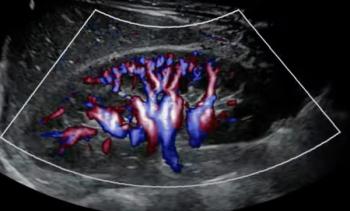
- Diagnostic Imaging Vol 30 No 11
- Volume 30
- Issue 11
Philips pursues reliability plus image, workflow gains
Achieving accurate, consistent results-at the lowest dose, in the shortesttime, when and where they areneeded-has become a mandate fromCT users and a central theme in theproduct development strategy atPhilips CT.
Achieving accurate, consistent results- at the lowest dose, in the shortest time, when and where they are needed-has become a mandate from CT users and a central theme in the product development strategy at Philips CT. To this end, Philips CT has focused on reliability, image quality, dose efficiency, and workflow optimization.
CT provides a foundation for modern diagnoses for patients spanning a wide spectrum of ages, conditions, and compliance abilities. It is often the first stop for patients in emergency situations presenting with chest pain, traumatic conditions, and a variety of other indications. To accommodate the ever-widening and varying uses of CT, however, our developers seek to understand the clinical ramifications of technology, using customers as sources of new ideas.
Enter the Brilliance iCT, a scalable CT platform combining speed, power, coverage, and dose-management tools. This system supports a wide range of clinical services and applications, including general imaging, trauma, cardiac, interventional, pediatric, vascular, and bariatrics. Our strategy sets the Brilliance iCT apart from other CT scanners that focus on a narrower subset of applications, such as cardiac imaging, by intelligent use of benchmarks for speed, power, coverage, and dose management across all routine and advanced CT protocols- from those addressing the sinuses to ones requiring CT angiography- which make it ready for anything.
The Brilliance iCT also offers a unique life-cycle scheme by allowing the user to design a configuration around his or her needs. The ability to configure tube power, rotation speed, and detector coverage, at the time of purchase or later through a field upgrade, provides flexibility intended to match changing institutional economic and clinical conditions.
These advances in design are made possible through exclusive technologies including the iMRC x-ray tube, Nano- Panel detector system, and a patented air-bearing technology. The Philips research and development teams are organized around and dedicated to these essential building blocks of CT.
Achieving high rotation speeds (up to 0.27 sec) places greater demands on tube performance. Leveraging the mature and stable design of the MRC x-ray tube, the new iMRC tube is also the first x-ray tube made without beryllium or lead. It uses a slotted anode and dual-support spiral-groove bearing to enable high power (120 kW), shortshot imaging, and focal-spot integrity at high rotation speeds. A Smart Focal Spot improves image quality through simultaneous deflection in the x- and z-axes to double the samples in every rotation.
The Brilliance iCT acquires data over an 8-cm swath through new detector technology known as the Nano-Panel. This device, a small tile, consists of detector material and electronics in a low-profile form ideally suited for reducing electronic noise and improving operation at these fast rotation speeds.
Additionally, a new 2D antiscatter (2D AS) grid is added to address the more complex scatter equation associated with the greater detector coverage. In smaller coverage systems, 1D antiscatter (Venetian Blind) is used and can be sufficient. However, with increased coverage, a cross-hatched grid architecture that aligns each detector element two-dimensionally to a scatter grid then to beam geometry is desired. The 2D AS provides scatter control to produce crisp images with excellent Hounsfield uniformity, all without loss of geometric beam efficiency (increase in dose delivery).
The air-bearing technology built into Brilliance iCT makes this CT scanner the first to move away from traditional ball-bearing designs, which become hot and unstable at increased rotation speeds. We had to move to this new technology to achieve the 220 rotations per minute available on the Brilliance iCT and deliver temporal resolution as low as 34 msec.
In development for more than six years, this gantry floats on a few microns of air, allowing a frictionless and stable rotation, such as is required to maintain focal-spot-todetector element integrity at these speeds. Harnessing speed benchmarks at higher power has resulted in total scan times being cut in half, improving image quality, decreasing the amount of contrast and dose required, and minimizing the effects of voluntary and involuntary patient motion.
To keep radiation dose in check, Philips Healthcare employs a Dose- Wise philosophy, a commitment to employing dose savings techniques whenever possible. The Eclipse DoseRight Collimator, an industry first, eliminates dose not benefiting image creation found at the beginning and the end of any spiral CT scan. The benefits of this technique are greatest at wider scanning coverage, making it a must for wide area scanners such as the Brilliance iCT. Filters and wedges are also automatically selected to remove soft x-rays, reduce dose, and optimize beam distribution according to the patient’s body size. No other system employs this many dose-saving features.
These and the other innovations built into our Brilliance iCT reflect a respect for customer insights and an understanding of the clinical ramifications of new and ever-growing procedures.
Articles in this issue
about 17 years ago
Multicenter trial confirmsvalue of coronary CT angioabout 17 years ago
Siemens tweaks PET/CT T with hybrid for radiologyabout 17 years ago
GE Healthcare seeks better image quality, lower doseabout 17 years ago
Tech advisor CT vendors plot strategies for growthabout 17 years ago
Vendors polish advanced apps with 3T platformsabout 17 years ago
MRI spots anomalies in children with hearing lossabout 17 years ago
CT proves clinical worth in bowel obstruction casesabout 17 years ago
Strategies can limit imaging fungibilityabout 17 years ago
Smart probes and biomarkers spot earliest signs of cancerabout 17 years ago
MRA finds value in hydrocephalus interventionsNewsletter
Stay at the forefront of radiology with the Diagnostic Imaging newsletter, delivering the latest news, clinical insights, and imaging advancements for today’s radiologists.




























